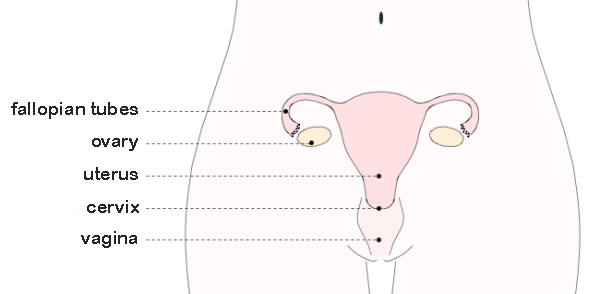A woman has two ovaries and two Fallopian tubes in her abdomen. The Fallopian tubes connect the ovaries to the womb. These organs make it possible for a woman to become pregnant.

What do the ovaries do?
The ovaries contain the egg cells and they also produce hormones. These hormones regulate the menstrual cycle. Another word for menstruation is a period. Normally, one egg cell is released from one of the ovaries once per month. This is called ovulation.
Once the egg cells have been used up, the ovaries stop producing almost all hormones. The woman then enters menopause.
What do the Fallopian tubes do?
The Fallopian tubes catch the egg cell that is released during ovulation. The Fallopian tubes then transport the egg cell to the womb.
The egg cell can come into contact with a sperm cell in the Fallopian tubes. This sperm cell can then fertilise the egg cell. If the egg cell is fertilised, this results in a pregnancy. If the egg cell is not fertilised, the egg cell is broken down. The woman then has her period (menstruation).
The Fallopian tubes do not produce any hormones. If a woman doesn’t want, or no longer wants, to have children, the Fallopian tubes do not serve any purpose.


